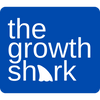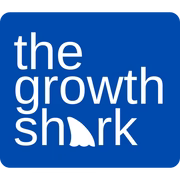
Enjoy!
If you want to talk about how we can help you with your marketing strategy, click here.
Jordan S. | Client Success Lead
How to Use SEO to Reach Page #1 of Google

Blog / How to Use SEO to Reach Page #1 of Google
Tags
SEO, SEM
Details
Published
Mar 6, 2022
Read Time
8 min
Author
Cory Doucette
In a world where virtually anyone can start a business at the touch of their fingers, it becomes difficult to stand out amongst the crowd.
An incredible idea doesn’t mean much if no one knows about it.
That’s where marketing comes in. Arguably one of the most significant aspects of running a business, SEO has been one of the most proven tactics to market a company of any size.
Search Engine Optimization and Marketing
Search engine optimization is important because it can expand your visibility and extend your reach to a wider audience of prospects.
Since Google is one of the most popular search engines today, it isn’t a surprise that more people can discover your business through the power of search.
SEO can also increase the traffic to your website the higher you rank in search results.
Not only can it build traction, but it also enhances the credibility of your company as more people begin to organically find it through searches.
What is SEO?
SEO stands for Search Engine Optimization and is the process of getting organic website visits from search engines.
The most common search engines are Google, Bing, and Yahoo.
Among the three, they control approximately 91% of the market share – thus, making them to be the most powerful and popular search engines.
The more visits your site gets, the more visibility it has when people search for things related to your business. More visibility can possibly lead to more customers.
What is SEM?
SEM stands for Search Engine Marketing.
Unlike SEO, SEM uses paid methods to increase a website’s visibility on search engines.
This is commonly done through relevant ads that appear when people search for things on Google.
Are they the same thing?
SEO and SEM are not the same thing. It’s a common mistake people make.
The simplest way to think of the difference is that SEO uses organic (free) methods to rank higher in search results. While SEM uses paid methods to rank higher.
Through search engine optimization, you are essentially trying to show Google that you are the best solution to the problems people search for.
The better you become at using language that answers people’s problems, the better the odds of your website appearing higher in search results.
However, SEO can take longer to create results.
SEM uses paid advertisements to help your website gain more traction. It usually involves marketing campaigns backed by research to determine the best keywords to use in your ads.
Search engine marketing ads are commonly called Pay Per Click, because the advertiser pays money based on how many times their ad is clicked on by searchers.
Compared to SEO, SEM can yield quicker results if the ads are properly designed.
Which is best to rank higher?
There is no single answer. The truth is, it greatly depends on the business.
In most cases, companies should utilize both to truly optimize the power of search engines.
SEO and SEM combined are crucial parts of a whole digital marketing strategy. Combining both search engine optimization and search engine marketing let’s you use the data from SEM to better enhance your SEO strategy and vise versa.
Your SEO work can also help you gain information that will help you create a SEM campaign to reach prospects that weren’t originally converted by your SEO strategy.
They both work in a cyclical way to assist one another.

Need a
Digital Audit?
Just drop us your website and let us take a look at what you're currently doing then we'll offer our high-level recommendations.
No charge. No commitment.
Now, it's Time to Select Your Target Niche
Market saturation occurs when a product or service has reached a level where the customers’ needs have been met and it becomes difficult to grow in that industry.
For example, the clothing industry is a very saturated market. There are millions of clothing lines out there and it would be very hard to stand out amongst competitors. For the product itself and in regards to search engine optimization.
This is where niche products or services come into play.
A niche is a distinct segment in a market that is underserved or overlooked by most businesses.
For example, a niche product would be vegan shampoo for wavy hair. This is a very specific type of product for people conscious of what goes into their shampoo. Which makes it much easier to be competitive for keywords like “vegan shampoo”, “wavy hair care” or “animal-friendly hair products”.
How do I pick the right niche?
Here are some questions to help you determine the niche for your own product or service:
- Is there a need people have that isn’t being satisfied?
- What are some current trends right now?
- What are people searching for online right now?
- What are some things I’m passionate about?
- Are there gaps in any current product lines?
- Where are some social media groups that have an interest in my niche?
- Are there forums that discuss my niche?
Create your ideal target persona
A user persona is a member of the target audience for your product or service. In other words, a fictional character that has the characteristics of your ideal customer.
Some characteristics can include their job, geographical location, pain points, motivators, and more.
There is a lot of information that goes into determining a target persona and that’s why using a custom target persona builder can really come in handy!
Define the biggest user needs and problems
In order to generate sales as a company, it helps to have a great message but it’s just as important to make sure you’re communicating that message to the right audience.
Remember: The more your audience feels you understand them, the more engaged and interested they will be in the things you’re saying.
Having a clear picture of their problems is essential to create content that really resonates with them and develops long-term relationships with customers.
Identify your top competitors
On top of knowing your product or service and how it best serves your niche, it’s just as important to know your competitors.
Identify your top competitors and research the strengths and weaknesses of their unique selling propositions (USPs), or the edge, benefits, or added value a business has that separates them from the competition.

Conduct Keyword Research to Find the Best SEO and SEM Keywords for Your Brand
The keyword research phase is crucial to help outline a proper SEO/SEM strategy.
Understand 3 core elements of keyword research
Keyword research is important because it gives you insight into what your target audience may be looking for in search engines.
Content should be created based around what people want to find. In order to determine what keywords can best help you develop your content, research is important.
There are three core elements of keyword research.
1) relevance
According to Google, relevance is how much your keyword applies to the searcher’s needs.
The content of your website or blog also has to be one of the best answers to their questions.
The value your resource provides has to exceed the others to rank higher in search.
2) Authority
Becoming an authoritative source involves enhancing your website with social credit, reliable backlinks, and quality information.
Websites like Forbes and Investopedia are highly credible and tend to rank high based on their authority.
Focus on building the quality of your content and user experience to help improve your authority.
3) Volume
Volume is the amount of times a keyword is searched per month across a search engine.
Although you may rank high for a keyword, it hardly helps if it’s a word that people don’t commonly search for.
Finding unique keywords that also have a decent search volume is important.
Make your content topics list
To begin thinking about your content, come up with a list of all the important topics related to your product or service.
Also think about your content in terms of search engine optimization.
How likely is it to be searched in terms of its relevance and volume?
Bucket those topics
Content buckets are important because each one helps you segment your target audience and create messages that tailor each group.
It helps you effectively communicate your message to a larger audience.
In order to bucket the list of topics you created, choose three that are top priority. Then, choose 5-10 supporting buckets that you think are important to your business.
Later in the process, you’ll use these buckets to help plan for more specific keywords.
User intent matters (a lot)
User intent is the specific goal a person has when they are using a search engine to find something. It has become very important with search engine optimization and is one of the most crucial ranking factors with keywords.
For example, you’re researching the keyword “how to fix an iPhone” for an article you want to create. A searcher’s intent can influence the direction of your article. If they just want to learn more about how to fix an iPhone, that makes the search intent more informational.
If they have intent on paying someone to fix the phone for them, then the search is transactional.
If your content is only targeting people who are looking for information about fixing an iPhone, you’ll need to make sure of the keyword’s intent before committing to it.
Search for all related SEO terms
The more creative you can be with your content topics, the better.
If you’re having trouble getting ideas and don’t have an SEO tool like Ahrefs, then you can enter some of your keywords into Google.
From there, you can research related search results and get more inspiration for your content.
Design a content strategy focused on SEO
A content strategy focused on SEO means that whenever you create optimized content, you emphasize how easy it should be for your audience to find your business in search engines.
Similar is true when thinking of search engine marketing.
By now, you know how important it is to appear in search engine results to increase traffic to your website.
Content and search engine optimization should always go hand in hand, providing a direction for your leads to go and making it easier for them to find your business.
Create your long-scroll pillar posts
First, you’ll select from your top 3-5 keywords to create your brand’s “pillar posts” that will act as the foundation of your content strategy.
In most cases, pillar posts are longer than normal blogs.
They’re longer pages of information with hyperlinked chapters at the top of the text and much more in-depth.
Pillar posts help people easily read through your content (blogs, videos, infographics) in an organized fashion. Also, Google and other search engines love when you organize your content based on relevant SEO-driven topics.
Focus on relevant supporting posts
Knowing your audience and their issues is important to maximize the power of search engine marketing.
It helps you approach your content with purpose and the information needed to communicate a message that really resonates with your viewers.
There is little point in sending out messages if the people you’re trying to reach aren’t receptive to it. Understand their pain points and show them that your business is the solution to their problems!
Utilize multiple forms of media
Beyond researching your audience, it helps to diversify your content mediums.
Use a combination of images, videos, infographics, and calls-to-action (CTAs) to create robust and versatile forms of content.
This will keep an already-engaged audience continuously interested in your product or service, optimizing search engine marketing to its fullest.
Track your SEO performance
It’s also important to monitor keyword rankings weekly and monthly along with tracking the traffic your site is getting.
Tools like Google Analytics and Google Search Console are very helpful to check search engine optimization performance.
Google Analytics helps you understand your audience’s behavior, engagement with content, device functionality, and more. This information is crucial to help you adjust your strategy along the way to better reach people in the future.
Best of all, these tools are free!!!
Develop a testing and experimentation game plan
Finally, develop a testing and experimentation game plan.
Combining your content strategy with your keyword research and analytics will help prepare you to learn crucial information for your business during your SEO campaign.
Focus on the ranking factors that search engines value the most, identify problems along the way, and take advantage of opportunities as you learn about them.
This will lead to long-term success and make your future search engine marketing strategies even better.
These SEO tips can help you reach page #1 of Google
There are many strategies to take advantage of search engine optimization and search engine marketing.
Using a combination of both SEO and SEM is crucial to a digital marketing strategy.
Begin by doing your keyword research.
Remember that relevance, authority, and volume are the important criteria search engines use to decide what ranks higher.
Then, once you find the right niche and identify your target persona, you’ll be able to create content that appropriately shows how your business is the solution to your user’s problems!
















